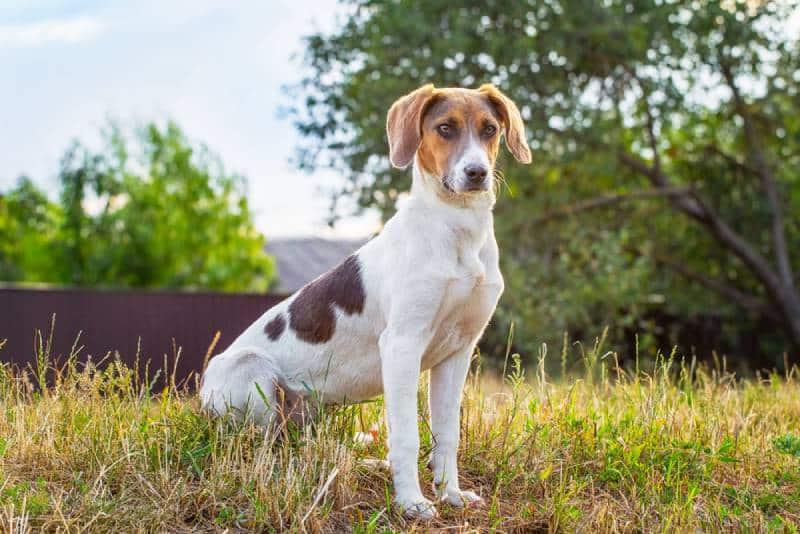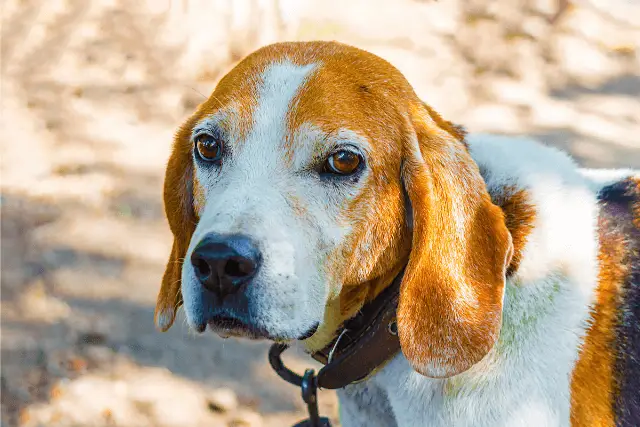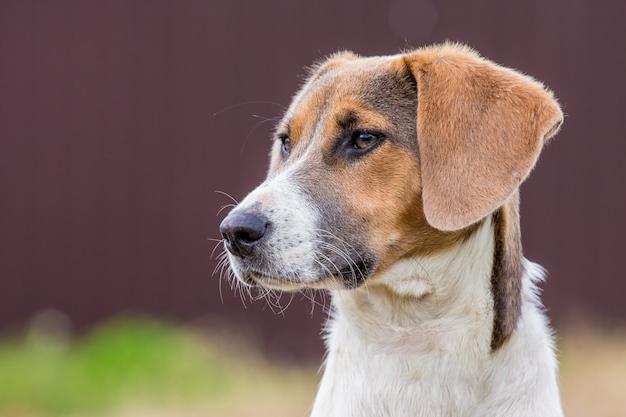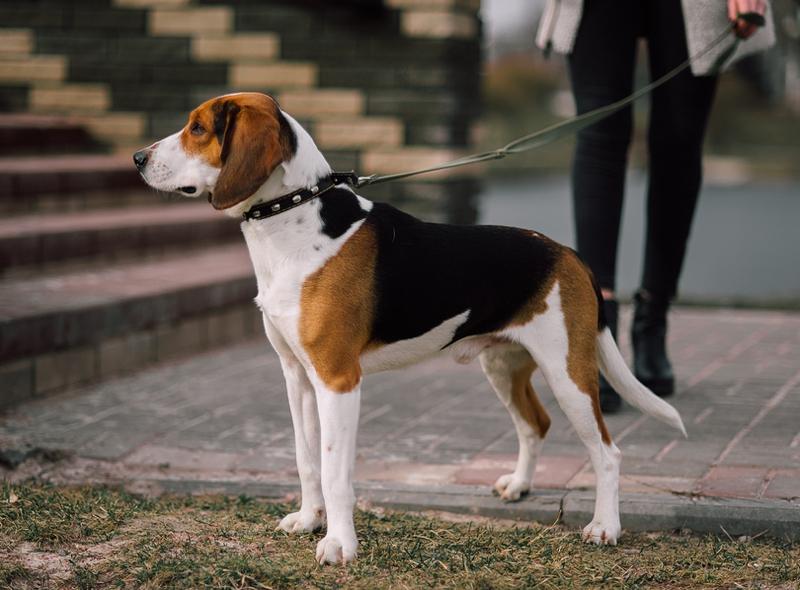- Breed Category: Hound
- Country of Origin: Estonia
- Average Height: 45-52 cm (18-20 in)
- Average Weight: 15-20 kg (33-44 lbs)
- Average Life Span: 12-15 years
- Grooming Requirements: Low, occasional brushing
- Exercise Requirements: High, needs daily exercise
- Coat Type: Short and dense
- Coat Color Variations: Tricolor, black, tan, white
- Shedding Level: Moderate
- Ear Type: Long and floppy
- Tail Type: Long and straight
- Temperament: Friendly, energetic, intelligent
- Intelligence Level: High
- Barking Tendency: Moderate to high
- Compatibility with Children: Good
- Compatibility with Other Pets: Generally good
- Training Ease: Moderate, requires consistency
- Common Health Issues: Hip dysplasia, ear infections
- Dietary Needs: Balanced diet, high protein
- Energy Level: High
- Drooling Tendency: Low
- Sensitivity to Weather: Moderate, dislikes extreme cold
- Overall Maintenance Level: Moderate
- Original Purpose: Hunting and tracking
- Year of Recognition by Kennel Clubs: 1954
- Apartment Friendly: Not ideal, needs space
- Best Suited For: Active families, hunters
- Cost of Ownership: Moderate
- Unique Traits: Excellent scent tracking ability
Imagine a dog that’s not just a companion but a piece of living history. Meet the Estonian Hound, a breed that’s as fascinating as it is friendly. This article will take you on a journey through the breed’s unique characteristics, rich history, and essential care tips.
The Estonian Hound, Estonia’s national dog, is a medium-sized breed known for its keen sense of smell and energetic nature. Originally bred for hunting, these dogs are agile and intelligent, making them excellent companions for active families.
Let’s dive into the history and origin of this remarkable breed. Developed in the 20th century, the Estonian Hound was created to meet specific hunting needs, blending local dogs with foreign breeds to enhance their tracking abilities.
Early Development and Role in Estonian Hunting Traditions

The Estonian Hound’s journey began in the early 20th century, a time when Estonia needed a hunting dog that could thrive in its unique landscape. The breed was developed by crossing local dogs with various foreign breeds, aiming to create a hound with exceptional tracking skills and endurance. This careful selection process resulted in a dog perfectly suited for Estonia’s dense forests and varied terrain.
Role in Estonian Hunting Traditions
In Estonia, hunting is more than a pastime; it’s a tradition deeply rooted in the culture. The Estonian Hound quickly became an integral part of this tradition, prized for its ability to track game with precision. These dogs were not just hunters; they were partners, working closely with their human counterparts to ensure a successful hunt.
Key Historical Figures
Several key figures played a role in the breed’s development, including local hunters and breeders who recognised the need for a specialised hunting dog. Their dedication and vision were instrumental in shaping the Estonian Hound into the breed we know today.
Physical Characteristics
Physically, the Estonian Hound is a medium-sized dog with a strong, muscular build. Its coat is short and dense, providing protection against the elements. The breed’s expressive eyes and alert ears give it a keen, intelligent appearance, while its agile body allows for swift movement through challenging terrain.
Appearance and Unique Traits

The Estonian Hound stands out with its medium size and athletic build, making it both sturdy and agile. Its coat is short and dense, typically showcasing a tri-colour pattern of black, white, and tan. This combination not only adds to its striking appearance but also provides a practical layer of protection against the elements. Distinctive markings, like a white blaze on the face or a saddle-like patch on the back, are common and add to its charm.
One of the breed’s most remarkable physical traits is its keen sense of smell. This ability is a testament to its hunting heritage, allowing it to track scents with impressive accuracy. The Estonian Hound’s nose is always on the move, making it a natural explorer.
Temperament and Behaviour
When it comes to temperament, the Estonian Hound is known for its friendly and sociable nature. These dogs are not just hunters; they are also loyal companions. They thrive in active households where they can engage in regular exercise and mental stimulation. Their intelligence and eagerness to please make them highly trainable, though they do best with consistent, positive reinforcement.
While they are generally good with children and other pets, early socialisation is key to ensuring they develop into well-rounded adults. Their energetic disposition means they love a good play session, but they also appreciate downtime with their family. Overall, the Estonian Hound is a delightful blend of energy, intelligence, and affection, making it a wonderful addition to the right home.
Personality and Suitability

The Estonian Hound is a delightful mix of friendly, intelligent, and energetic traits. These dogs are not just about looks; their personality shines through in every interaction. They are naturally sociable, making them a great fit for families who enjoy an active lifestyle. Their intelligence means they pick up on training quickly, and they love to be challenged with new tasks.
Family Pet and Hunting Companion
As a family pet, the Estonian Hound is a joy to have around. They bond well with family members and are known for their loyalty. Their hunting background makes them excellent companions for those who enjoy outdoor activities. Whether it’s a hike in the bush or a day at the park, these dogs are always up for an adventure.
Interaction with Children and Other Animals
Estonian Hounds generally get along well with children and other animals. Their friendly nature means they are usually patient and gentle, but early socialisation is important to ensure they are comfortable in various situations. They enjoy playtime with kids and can be a calming presence in a busy household.
Training and Exercise Needs
Training an Estonian Hound is a rewarding experience due to their eagerness to learn. They respond best to positive reinforcement and consistent routines. Regular exercise is crucial for this energetic breed. Daily walks, play sessions, and mental challenges keep them happy and healthy. Without enough activity, they might become bored, so keeping them engaged is key.
Training, Exercise, and Health

Importance of Early Training and Socialisation
Getting your Estonian Hound started with training and socialisation early on is crucial. These dogs are naturally curious and intelligent, so introducing them to different environments, people, and other animals helps them grow into well-adjusted adults. Early exposure to various situations ensures they remain confident and friendly throughout their lives.
Recommended Training Techniques
When it comes to training, positive reinforcement is the way to go. These hounds respond well to praise, treats, and consistent routines. Keep training sessions short and engaging to hold their attention. Remember, patience and consistency are key to unlocking their full potential.
Daily Exercise Requirements and Activities They Enjoy
Estonian Hounds are energetic and need plenty of daily exercise. Think long walks, playtime in the backyard, or even agility training. They love activities that challenge both their bodies and minds. Without enough exercise, they might get a bit restless, so keeping them active is essential.
Health and Lifespan
Generally, Estonian Hounds are healthy dogs with a lifespan of around 12 to 15 years. Regular vet check-ups, a balanced diet, and plenty of exercise contribute to their well-being. Like any breed, they can be prone to certain health issues, so staying informed and proactive about their health is important.
Health and Care for the Estonian Hound

Common Health Issues
Estonian Hounds are generally robust, but like any breed, they can face certain health challenges. Hip dysplasia and ear infections are among the more common issues. Regular vet visits can help catch these early, ensuring your hound stays in top shape.
Average Lifespan and Health Tips
With proper care, these dogs typically live between 12 to 15 years. To keep them healthy, provide a balanced diet, regular exercise, and mental stimulation. These elements are crucial for their physical and mental well-being.
Preventative Care Recommendations
Preventative care is key. Regular vaccinations, flea and tick prevention, and dental care should be part of their routine. Keeping an eye on their weight and ensuring they get enough exercise will also help prevent obesity-related issues.
Grooming and Maintenance
Their short, dense coat is relatively low-maintenance. A weekly brush will keep it looking its best and help reduce shedding. Regular ear checks and nail trims are also important to prevent infections and discomfort.
Coat Care and Grooming Routines

Shedding and Seasonal Grooming Tips
The Estonian Hound’s short, dense coat is pretty easy to manage, but it does shed, especially during seasonal changes. A weekly brush is usually enough to keep their coat looking sleek and to manage shedding. During peak shedding seasons, you might want to brush them more frequently to keep loose hair under control. This not only helps with shedding but also keeps their skin healthy by distributing natural oils.
Bathing should be occasional, only when necessary, as over-bathing can strip their coat of essential oils. Always use a dog-friendly shampoo to avoid skin irritation. Regular ear checks are important too, as their floppy ears can be prone to infections. A quick wipe with a damp cloth can help keep them clean.
Diet and Nutrition
A balanced diet is crucial for the Estonian Hound’s health and energy levels. High-quality dog food that meets their nutritional needs is essential. Look for options rich in protein to support their active lifestyle. It’s also important to monitor their weight, as these dogs can be prone to obesity if overfed or under-exercised.
Fresh water should always be available, and treats should be given in moderation. Consider incorporating some fresh fruits and vegetables into their diet for added vitamins and minerals. Regular vet check-ups can help tailor their diet to any specific health needs they might have.
Nutritional Needs for Optimal Health

Foods to Include and Avoid
For the Estonian Hound, a balanced diet is key to maintaining their energy and health. High-quality dog food rich in protein supports their active lifestyle. Look for options with real meat as the first ingredient. Incorporating fresh fruits and vegetables can provide essential vitamins and minerals. Avoid foods high in fillers, artificial preservatives, and excessive fats, as these can lead to obesity and other health issues.
Feeding Schedules and Portion Recommendations
Estonian Hounds thrive on a consistent feeding schedule. Typically, two meals a day work well for adult dogs, while puppies may need three to four smaller meals. Portion sizes depend on their age, weight, and activity level, so it’s best to consult with your vet for tailored advice. Always ensure fresh water is available.
Fun Facts and Trivia
- The Estonian Hound is the only dog breed native to Estonia, making it a national treasure.
- These dogs have an incredible sense of smell, which is why they excel in tracking and hunting.
- Despite their hunting background, Estonian Hounds are known for their gentle and friendly nature, making them great family pets.
Interesting Tidbits and Famous Estonian Hounds
Interesting Tidbits about the Breed
The Estonian Hound is a unique breed with a fascinating history. As the only dog breed native to Estonia, it holds a special place in the hearts of Estonians. These dogs were specifically bred to adapt to the country’s diverse landscapes, from dense forests to open fields. Their exceptional sense of smell and endurance make them outstanding hunters, a trait that has been honed over generations.
One interesting fact is that the Estonian Hound was developed in response to a 1930s law that required hunting dogs to be smaller in size to protect local wildlife. This led to the creation of a breed that is not only efficient in tracking but also agile and compact.
Famous Estonian Hounds in Media or History
While the Estonian Hound may not be as widely recognised in global media as some other breeds, it has made its mark in local culture. These dogs are often featured in Estonian literature and folklore, symbolising loyalty and bravery. In recent years, they have gained popularity in dog shows across Europe, showcasing their agility and intelligence.
In Estonia, the breed is celebrated for its role in traditional hunting practices, often depicted in historical accounts and stories passed down through generations. Their contribution to the country’s hunting heritage is a point of pride for many Estonians.
Final Thoughts

The Estonian Hound is a remarkable blend of history and companionship. This breed’s unique traits make it a cherished part of Estonian culture and a beloved family pet. With its keen sense of smell and energetic nature, the Estonian Hound thrives in active environments, offering both challenges and rewards to its owners. Embracing this breed means welcoming a loyal, intelligent, and adventurous companion into your life. Consider adopting an Estonian Hound to experience the joy and fulfillment they bring to any active household.
